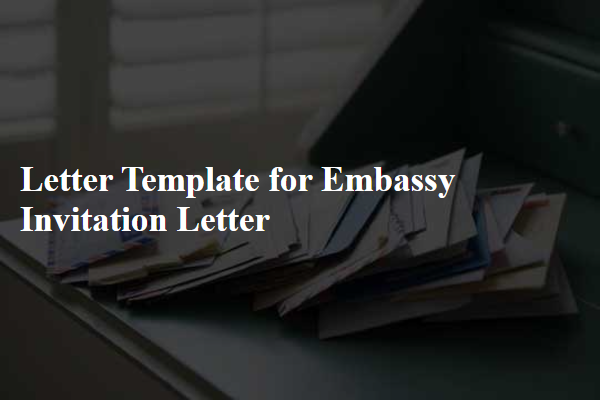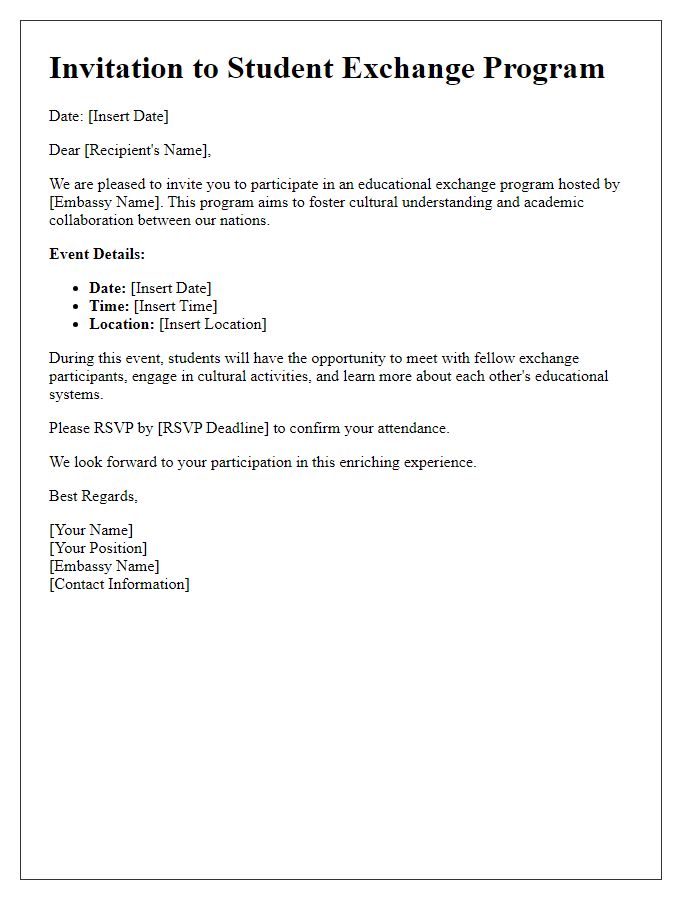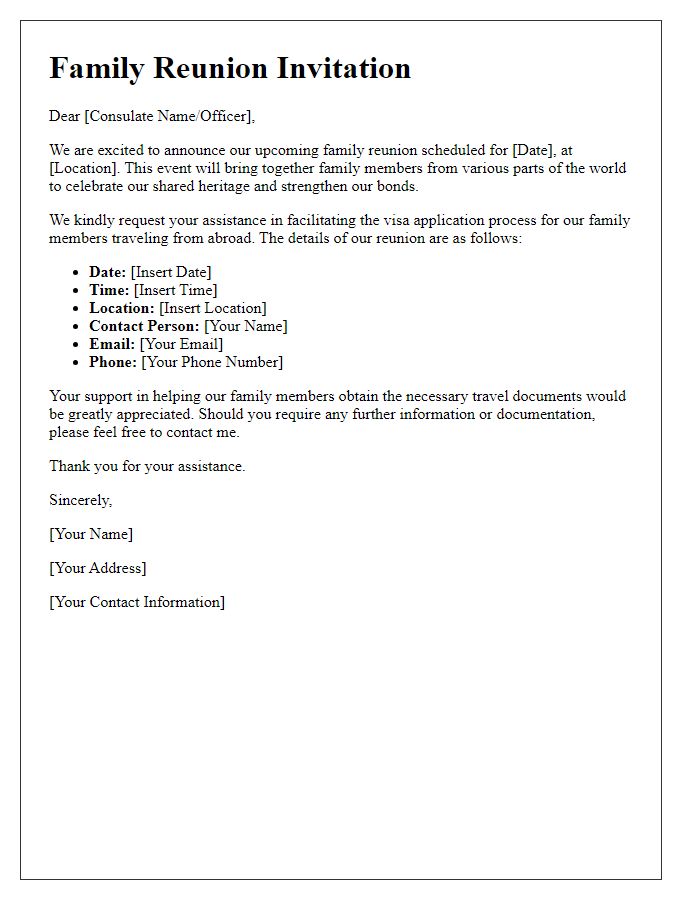Are you looking to craft the perfect invitation letter for an embassy visit? Writing an effective invitation can make a significant difference in ensuring a smooth experience when attending important diplomatic events. In this article, we will explore the essential elements to include in your embassy invitation letter, guiding you through a step-by-step process. So, let's dive in and discover how to create an impactful invitation that opens doors to your diplomatic endeavors!

Purpose of Visit
An embassy invitation letter serves as a formal document that outlines the purpose of a visitor's trip to another country, usually in relation to attending a significant event or engaging in official business. This letter typically details critical information including the visitor's name, nationality, intended duration of stay, and specific purpose, such as attending a cultural event, business meeting, or academic conference. For instance, an invitation to the Global Business Summit in New York City may require the visitor's identity verification through passport details and an explanation of their role, facilitating the visa application process. Essential entities are involved, such as the embassy's contact information, applicable regulations, and necessary documentation to ensure a smooth entry into the host country.
Relationship to Invitee
An invitation to an event can be crucial when applying for a visa, particularly for diplomatic missions like embassies. A comprehensive invitation letter typically highlights the sender's relationship to the invitee. For instance, if the sender is a business partner, they should specify the nature of the business relationship, its duration, and any relevant collaboration details. If the sender is a family member, they should denote familial connections such as 'brother,' 'sister,' or 'parent' and include information such as the invitee's background, residency details, and purpose of visit. Clearly articulating the motive behind the invitation, whether for business conferences, weddings, or family reunions, reinforces the legitimacy of the visit. Accurate details, such as dates, venues, and local contact information, lend further credibility to the invitation letter.
Detailed Itinerary
A detailed itinerary serves as an essential document for visitors seeking embassy invitations, especially for international travel. This itinerary typically includes specific dates, activities, and accommodations for a planned visit. For example, a traveler may arrive in Paris, France, on May 1, 2024, and check in at the Hotel de Ville (address: 2 Place de l'Hotel de Ville, 75004 Paris, France). On May 2, planned activities might include visits to the Eiffel Tower (an iconic iron lattice tower standing 300 meters tall) and the Louvre Museum (home to over 35,000 works of art) from 9 AM to 5 PM. Day trips to nearby UNESCO World Heritage sites, like the Palace of Versailles (established in the 17th century) on May 3, can enhance the travel experience. On the last day, scheduled flights, such as Air France Flight 1234, departing from Charles de Gaulle Airport at 7 PM on May 5, would conclude the journey. Such detailed insights provide clarity and purpose to the visa application process.
Financial Sponsorship
A financial sponsorship letter for an embassy invitation serves as an essential document to support a visa application, providing assurance regarding the individual's financial stability. This letter typically details the sponsor's commitment to cover expenses such as travel, accommodation, and living costs during the applicant's stay. The sponsor, often a relative or friend residing in the host country, should include specific details such as their full name, address, occupation, and financial capacity, including bank statements or proof of income. Additionally, the letter should explain the relationship between the sponsor and the applicant, emphasizing any significant events or reasons for the visit, such as family gatherings, educational opportunities, or cultural exchanges. By presenting a well-structured financial sponsorship letter, the applicant increases their chances of obtaining a visa to visit countries like Canada, the United States, or those within the Schengen Area.
Contact Information
The embassy invitation letter requires specific contact information for both the host and the guest to ensure clarity and professionalism. The host's details must include full name, address (including city and zip code), telephone number (with country code), and email address. The guest's contact information should also encompass their full name, residential address, phone number, and email address. Inclusion of a specific date of invitation, purpose of visit, and duration can help frame the context for the embassy's understanding and approval process. Proper formatting of this information is critical to facilitate official correspondence and verifications during the visa application procedure.
Letter Template For Embassy Invitation Letter Samples
Letter template of personal invitation for cultural exchange at the embassy.

Letter template of corporate invitation for business meeting at the embassy.

Letter template of humanitarian invitation for charity event at the embassy.

Letter template of educational invitation for student exchange program at the embassy.










Comments